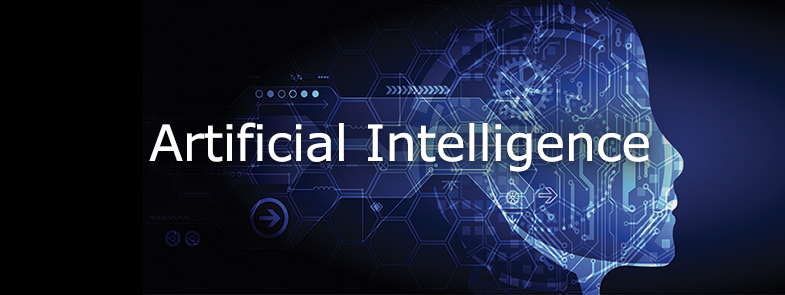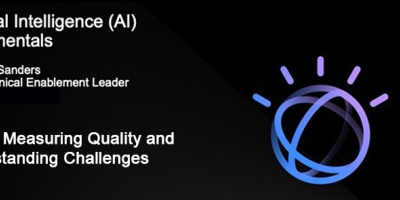Algorithmic bias occurs when a computer system reflects the implicit values of its human designers in its behavior.
Editor's Note: This article is excerpted from chapter 3 of Artificial Intelligence: Evolution and Revolution
Bias can emerge due to many factors, including but not limited to the design of the algorithm itself and unintended or unanticipated use or decisions relating to the way data is collected, coded, selected, or used to train an algorithm. Algorithmic bias is found across platforms, such as search engine results and social media platforms, and can have impacts ranging from inadvertent privacy violations to reinforcement of social biases of race, gender, sexuality, and ethnicity.
The study of algorithmic bias is most concerned with algorithms that reflect “systematic and unfair” discrimination. This bias has only recently been addressed in legal frameworks, such as the 2018 European Union’s General Data Protection Regulation (GDPR). “Explainability” is the process of explaining why an ML model behaved in a certain way, such as approving or declining a bank loan.
As algorithms expand their ability to organize society, politics, institutions, and behavior, sociologists have become concerned with the ways in which unanticipated output and manipulation of data can impact the physical world. Because algorithms are often considered to be neutral and unbiased, they can inaccurately project greater authority than human expertise, and in some cases, reliance on algorithms can displace human responsibility for their outcomes. Bias can enter into algorithmic systems as a result of pre-existing cultural, social, or institutional expectations; because of technical limitations of their design; or by being used in unanticipated contexts or by audiences who are not considered in the software’s initial design.
Algorithmic bias has been cited in cases ranging from election outcomes to the spread of online hate speech. Problems in understanding, researching, and discovering algorithmic bias stem from the proprietary nature of algorithms, which are sometimes treated with great secrecy. Even when full transparency is provided, the complexity of certain algorithms poses a barrier to understanding their functioning. Furthermore, algorithms may change, or respond to input or output in ways that cannot be anticipated or easily reproduced for analysis. In many cases, even within a single website or application, there is no single “algorithm” to examine, but instead a network of many interrelated programs and data inputs, even between users of the same service.
Algorithms have become the backbone of search engines, social-media websites, recommendation engines, online retail, online advertising, and more.
Contemporary social scientists are concerned with algorithmic processes embedded into hardware and software applications because of their political and social impact, and these scientists question the underlying assumptions of an algorithm’s neutrality. Systematic and repeatable errors have occurred that create unfair outcomes, such as privileging one arbitrary group of users over others. For example, a credit score algorithm may deny a loan without being unfair if it is consistently weighing relevant financial criteria. If the algorithm recommends loans to one group of users but denies loans to another set of nearly identical users based on unrelated criteria, and if this behavior can be repeated across multiple occurrences, the algorithm can be described as biased.
This bias may be intentional or unintentional.
Bias can be introduced to an algorithm in several ways. During the assembly of a dataset, data may be collected, digitized, adapted, and entered into a database according to human-designed cataloging criteria. Next, programmers assign priorities, or hierarchies, for how a program assesses and sorts that data. This requires human decisions about how data is categorized and which data is included or discarded. Some algorithms collect their own data based on human-selected criteria, which can also reflect the bias of human designers. Other algorithms may reinforce stereotypes and preferences as they process and display “relevant” data for human users—for example, by selecting information based on previous choices of a similar user or group of users.
Beyond assembling and processing data, bias can emerge as a result of design. For example, algorithms that determine the allocation of resources or that scrutinize (such as determining school placements) may inadvertently discriminate against a category when determining risk based on similar users (as in credit scores). Meanwhile, recommendation engines that work by associating users with similar users or that make use of inferred marketing traits might rely on inaccurate associations that reflect broad ethnic, gender, socio-economic, or racial stereotypes.
Another example comes from determining criteria for what is included and excluded from results. These criteria could present unanticipated outcomes for search results, such as flight-recommendation software that omits flights that do not follow the sponsoring airline’s flight paths.
Algorithms may also display an uncertainty bias, offering more confident assessments when larger datasets are available. This can skew algorithmic processes toward results that more closely correspond with larger samples, which may disregard data from underrepresented populations.
Contemporary Critiques and Responses
Though well-designed algorithms frequently determine outcomes that are equally (or more) equitable than the decisions of human beings, cases of bias still occur and are difficult to predict and analyze. The complexity of analyzing algorithmic bias has grown alongside the complexity of programs and their design. Decisions made by one designer, or team of designers, may be obscured among the many pieces of code created for a single program. And over time, these decisions and their collective impact on the program’s output may be forgotten. In theory, these biases may create new patterns of behavior, or “scripts,” in relationship to specific technologies as the code interacts with other elements of society. Biases may also impact how society shapes itself around the data points that algorithms require. For example, if data shows a high number of arrests in a particular area, an algorithm may assign more police patrols to that area, which could lead to more arrests.
The decisions of algorithmic programs can be seen as more authoritative than the decisions of the human beings they are meant to assist, which is known as “algorithmic authority.” This is described as the decision to regard as authoritative an unmanaged process of extracting value from diverse, untrustworthy sources, such as search results. This neutrality can also be misrepresented by the language used by experts and the media when results are presented to the public. For example, a list of news items selected and presented as “trending” or “popular” may be created based on significantly wider criteria than just their popularity.
Because of their convenience and authority, algorithms are theorized as a means of delegating responsibility away from humans. This can have the effect of reducing alternative options, compromises, or flexibility. Algorithms can be considered a new form of “generative power” in that they are a virtual means of generating actual ends. Where previously human behavior generated data to be collected and studied, powerful algorithms increasingly could shape and define human behaviors.
In recent years, the study of the Fairness, Accountability, and Transparency (FAT) of algorithms has emerged as its own interdisciplinary research area with an annual conference called FAT.

























 More than ever, there is a demand for IT to deliver innovation. Your IBM i has been an essential part of your business operations for years. However, your organization may struggle to maintain the current system and implement new projects. The thousands of customers we've worked with and surveyed state that expectations regarding the digital footprint and vision of the company are not aligned with the current IT environment.
More than ever, there is a demand for IT to deliver innovation. Your IBM i has been an essential part of your business operations for years. However, your organization may struggle to maintain the current system and implement new projects. The thousands of customers we've worked with and surveyed state that expectations regarding the digital footprint and vision of the company are not aligned with the current IT environment. TRY the one package that solves all your document design and printing challenges on all your platforms. Produce bar code labels, electronic forms, ad hoc reports, and RFID tags – without programming! MarkMagic is the only document design and print solution that combines report writing, WYSIWYG label and forms design, and conditional printing in one integrated product. Make sure your data survives when catastrophe hits. Request your trial now! Request Now.
TRY the one package that solves all your document design and printing challenges on all your platforms. Produce bar code labels, electronic forms, ad hoc reports, and RFID tags – without programming! MarkMagic is the only document design and print solution that combines report writing, WYSIWYG label and forms design, and conditional printing in one integrated product. Make sure your data survives when catastrophe hits. Request your trial now! Request Now. Forms of ransomware has been around for over 30 years, and with more and more organizations suffering attacks each year, it continues to endure. What has made ransomware such a durable threat and what is the best way to combat it? In order to prevent ransomware, organizations must first understand how it works.
Forms of ransomware has been around for over 30 years, and with more and more organizations suffering attacks each year, it continues to endure. What has made ransomware such a durable threat and what is the best way to combat it? In order to prevent ransomware, organizations must first understand how it works. Disaster protection is vital to every business. Yet, it often consists of patched together procedures that are prone to error. From automatic backups to data encryption to media management, Robot automates the routine (yet often complex) tasks of iSeries backup and recovery, saving you time and money and making the process safer and more reliable. Automate your backups with the Robot Backup and Recovery Solution. Key features include:
Disaster protection is vital to every business. Yet, it often consists of patched together procedures that are prone to error. From automatic backups to data encryption to media management, Robot automates the routine (yet often complex) tasks of iSeries backup and recovery, saving you time and money and making the process safer and more reliable. Automate your backups with the Robot Backup and Recovery Solution. Key features include: Business users want new applications now. Market and regulatory pressures require faster application updates and delivery into production. Your IBM i developers may be approaching retirement, and you see no sure way to fill their positions with experienced developers. In addition, you may be caught between maintaining your existing applications and the uncertainty of moving to something new.
Business users want new applications now. Market and regulatory pressures require faster application updates and delivery into production. Your IBM i developers may be approaching retirement, and you see no sure way to fill their positions with experienced developers. In addition, you may be caught between maintaining your existing applications and the uncertainty of moving to something new. IT managers hoping to find new IBM i talent are discovering that the pool of experienced RPG programmers and operators or administrators with intimate knowledge of the operating system and the applications that run on it is small. This begs the question: How will you manage the platform that supports such a big part of your business? This guide offers strategies and software suggestions to help you plan IT staffing and resources and smooth the transition after your AS/400 talent retires. Read on to learn:
IT managers hoping to find new IBM i talent are discovering that the pool of experienced RPG programmers and operators or administrators with intimate knowledge of the operating system and the applications that run on it is small. This begs the question: How will you manage the platform that supports such a big part of your business? This guide offers strategies and software suggestions to help you plan IT staffing and resources and smooth the transition after your AS/400 talent retires. Read on to learn:
LATEST COMMENTS
MC Press Online